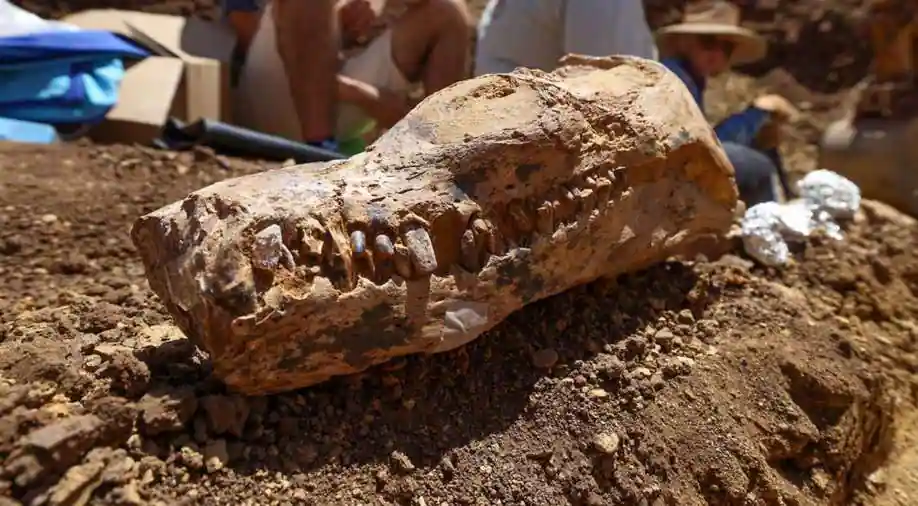
The first sentence recorded in the world’s first alphabet explains a problem that humans still face today: head lice. The words “May this tusk root out the lice of the hair and the beard” is carved onto a little ivory comb. The comb, discovered in Lachish, a Canaanite city-state in the second millennium BCE and the second most significant city in the kingdom of Judah, demonstrates that people have been plagued by lice for thousands of years and that even the wealthiest were not immune.
The inscription was engraved in the Canaanite language, which was spoken between 3500 and 1150 B.C.E. in what is now Syria, Jordan, Lebanon, Israel, and Palestine. The translation was recently published in the Jerusalem Journal of Archaeology.
“The inscription is incredibly human,” says co-author Yosef Garfinkel, an archaeologist at Israel’s Hebrew University who helped supervise the digs, to the Guardian’s Ian Sample. “You have a comb, and you have the wish to kill lice on the comb.”
We now have all of these sprays, modern medicines, and poisons. They didn’t have those in the past.”
Archaeologists discovered the comb in 2016 in the Israeli archaeological site of Lachish. The tiny one- to three-millimeter letters, however, went unnoticed until 2021, when research associate Madeleine Mumcuoglu at the Hebrew University of Jerusalem found the message while zooming in on a photo of the comb, according to CNN’s Katie Hunt. Mumcuoglu had been researching the lice remains discovered on the artifact.
“I just snapped a photo with my iPhone.” And it was insufficient. Mumcuoglu tells the publication, “So I brought it to a really powerful light and snapped another picture.” Later, researchers discovered 17 letters that combined to make seven words.
While Canaanite letter clusters have been discovered on pottery shards and arrowheads, this is the first entire written sentence in the language. The first writing systems in the world were not alphabetic. According to the Guardian, these arose circa 3200 B.C.E. from Mesopotamia and Egypt and employed symbols to express syllables and words. According to Colin Barras of New Scientist, the Canaanite alphabet was established later, most likely in or around Egypt. According to the journal, experts argue the exact moment when the alphabet evolved, although most academics place it at 3,800 years ago.
This alphabet was utilized for hundreds of years before becoming the basis for the ancient Greek and Latin writing systems.
“The alphabet was invented by the Canaanites… Today, everyone on the planet can read and write using the alphabet system. “This is truly one of humanity’s most important intellectual achievements,” Garfinkel tells CNN. “When you write in English, you’re writing in Canaanite.”
The comb is about 1.5 inches wide and 1 inch tall. It has six thick teeth on one side that were used to detangle hair tangles. To eliminate lice and their eggs, the other side had 14 finer teeth. According to the study, all of the teeth broke off over time, but their bases are still visible.
The comb’s exact date remains unknown. Two carbon dating attempts failed. Based on parallels with other artifacts, scholars believe it dates from 1700 to 1550 B.C.E. The alphabet was previously discovered in Egypt’s Sinai desert between 1900 B.C.E. and 1700 B.C.E., according to Eleanor H. Reich for the Associated Press.
However, according to Austrian archaeologist Felix Höflmayer, who was not part of the study, dating artifacts in this manner is not definite.
“There simply aren’t enough properly dated early alphabetic inscriptions known right now,” he tells the publication. “Seventeen letters preserved on a single piece is amazing,” he says of the discovery.
According to Christopher Rollston, a Northwest Semitic languages and literature researcher at George Washington University who was not involved in the current study, the discovery is a “great decipherment.”
“Lice have been an issue throughout human history,” Rollston told the journal. “We can only hope that this inscribed comb was useful in doing what it was intended to do: Identify some of these pesky insects.
It’s a simple line that expresses modern-day parents’ hopes and worries just as well as the bronze era Canaanite who owned the double-edged ivory comb on which the words appear.
The inscription on the luxury item is thought to be the oldest known sentence written in the earliest alphabet and reads: “May this tusk root out the lice of the hair and the beard.” “The inscription is very human,” remarked Prof Yosef Garfinkel of the Hebrew University of Jerusalem, who assisted in the direction of the Lachish excavations. “You have a comb and a wish to kill lice on your hair and beard on the comb.” We now have all of these sprays, modern medicines, and poisons. They didn’t have those in the past.”
